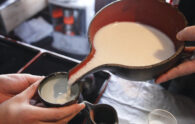Our ILC Relay series interviews people in Iwate who support the ILC project, so our readers can see what Iwate as a whole is doing to bring about the project. This time we’d like to introduce Sam Slone, who works as a Coordinator of International Relations for Hiraizumi Town in southern Iwate.
PROFILE
Samuel Slone
Sam Slone is 29, and lives in Hiraizumi. Sam comes from Alaska, where he first began studying Japan and the Japanese language in high school, continuing in college. His work in Hiraizumi is mostly in translation and interpreting at the town hall, but he also holds English lessons, gives seminars on hospitality for foreign guests, helps out at special events, and provides foreign-language support at the tourist information office.
I grew up and lived in Alaska, between the mountains and the coast, before coming to Japan. Despite living in the city, I was lucky enough to grow accustomed to the scenic vistas and abundant greenery of the Last Frontier (a nickname for Alaska) in my daily life, and now I can hardly imagine life without the backdrop of nature. When I accepted this position in Japan, I admit I was apprehensive. I nervously conjured images of the concrete jungle of Tokyo and commuter trains so full the conductors have to jam you in with a stick.
On my arrival in Iwate, I was glad to see I needn’t have worried. The north of Japan is home to some the country’s most spectacular and scenic untapped wilderness. The air and the water is clean, and anytime I like there is ample opportunity for hiking, mountain climbing, nature walks, or just peering out the window and enjoying the trees, the fields, and the mountain views. I was of course, also relieved to see that all the modern conveniences and recreational opportunities of urban life are present as well: shopping, cinemas, dining and night life are all readily within reach, usually just a few short rail stops away.
I was excited to find that living in Hiraizumi in particular afforded a lot of opportunities to explore the natural scenery, and all within walking distance. The history of Hiraizumi is a fascinating one, tied to the ideals of Japanese Buddhism, but suffice it to say that the Japanese reverence of the natural world was absorbed into Buddhist thought when it reached Japan’s shores, leading to temples and gardens incorporating the natural landscape in their principles of aesthetic design. Owing to the remarkable preservation efforts in Hiraizumi, you can still to this day stroll through the shadows of a forest of primordial redwoods, bamboo, and pines, enjoying the exotic sights and sounds of an ancient temple complex while the heady scent of incense drifts on the breeze.
What’s more, I was welcomed with open arms by the community and my new co-workers. It’s easy to feel at home even in unfamiliar climes when your neighbors are stopping by with garden fresh carrots, potatoes, cherries and strawberries, or inviting you to wave a torch (and raise a glass) together at the new year’s festival.
Northern Japan suffered terrible setbacks in the wake of the 2011 tsunami, and some regions still feel the effects of a devastated economy and depopulated towns and villages today, but the community ties that brought people together in the recovery effort remain strong, and the people of Iwate readily extend the same friendship and generous hospitality to new faces and visitors to their corner of the world.
The historically remote nature of the region, both geographically and politically, has also given rise to unique cultural developments, and offers colorful festivals and traditions one can experience nowhere else in Japan. Not to mention, the regional delicacies! (hatto dumpling soup and toasted mochi rice cakes being personal favorites)
Good food, peaceful, friendly communities, and the gorgeous environment make Iwate a great place to lay your head. Knowing all the opportunities that the ILC project will bring to the region also makes me very excited for the future potential of Iwate and northern Japan, and I’m sure the developments that the ILC brings will create an even more vibrant cultural and economic center.
Japanese
ILCリレー⑪スローン・サーミュエルさん(岩手県平泉町在住)
ILCリレーでは,ILC実現のためのオール岩手の取り組みを発信するために、ILCを応援している岩手県民の方々を紹介しています。今回は、平泉町で国際交流員として活躍しているスローン・サーミュエルさんをご紹介します。
【プロフィール】
スローン・サーミュエル
アラスカ出身、29歳。
アラスカの高校で日本語の勉強を始め、大学でも継続して日本語を学ぶ。
現在は、岩手県平泉町役場に勤務しており、仕事は翻訳・通訳がメイン。
その他にも英会話教室、外国来客対応の講座、イベント実行の手伝い、観光案内所の外国語対応などの様々な業務も行っている。
アラスカの、山と海岸の間にある街に生まれ育ちました。そこから来日。アラスカで住んでいたのは都会でしたが、ラスト・フロンティア(※アラスカの愛称)ならではの緑豊かな景色を毎日見るような生活を送っていてとても幸せでした。自然がすぐ目の前にない生活なんて想像できないほど、自然に囲まれた生活に慣れていました。そのため、日本での仕事を引き受けたときに、少し不安でした。なぜなら、駅員に押されるほどぎゅうぎゅう詰めの通勤電車や、東京のようなコンクリート・ジャングル(ビルの林立する都会)の姿を思い浮かべ、心配していました。
でも、何も心配することはありませんでした。岩手県に実際に来てみると、そう分かりました。東北には、日本の他にはない、壮観な自然環境が存在しています。空気と水がきれいで、ハイキング、山登り、ネイチャーウォーキングのほかに、窓から林、畑、山々の景色をいつでも眺めることができます。とはいっても、商店街、映画館、レストラン、ナイトライフなど、都会ならではの近代的な便利さやレクリエーションも勢ぞろいしている上に、電車ですぐアクセスできて、ほっとしました。
【写真】
岩手県平泉町の風景
特に平泉での生活は、自然との触れ合う機会が多いので、さらに慰められました。また、平泉の歴史は深くて面白いのですが、簡単に言えば、日本の独特な仏教思想と結ばれているのが大きな特徴です。平泉の歴史的なお寺は自然の景色に溶け込むように設計されました。現代に続く古代の松、竹、杉などの間で散歩しながら立派なお寺の異国情緒も楽しめます。
それに、同僚をはじめ地元の方が両手を広げて歓迎してくれました。近所の方が、にんじん、ジャガイモ、サクランボ、イチゴなど畑からとったばかりの野菜を提供してくれたり、お正月の祭りで一緒にたいまつを持つように誘ってくれたりしたため、私は不慣れな環境にも次第に慣れるようになりました。
【写真】
平泉町のお祭りで“たいまつ”を持つサム(写真左)
東北は、2011年の東日本大震災津波から甚大な被害を受けただけでなく、経済の低迷や人口減少に苦しんでいる地域が多々ありますが、復興により培った絆が人と人を強く結んでいます。また、地域に新しく来た人やお客さんに対して、同じような絆を築くために、友情の手を差し伸べ、豊かなおもてなしの精神をもって接してくれます。
【写真】
平泉町での餅つき体験
岩手は、昔は距離的かつ政治的に人里離れた場所であったため、ユニークな文化が展開され、日本のほかにはない色鮮やかなお祭りや習慣を有しています。いうまでもないですが、郷土料理はとても素晴らしいです!(私的に、はっとや焼き餅が大好きです)
岩手は食べ物がおいしい上に、地域が平和で親しみやすく、自然がきれい。こんな文化を誇る岩手は、暮らしやすくて住むためには最適な場所です。ILCが岩手に様々なチャンスをもたらすことを考えると、私は岩手や東北の未来の可能性を期待せざるを得ません。ILCが実現することによって、岩手や東北が今よりも活気あふれた文化的かつ経済的拠点になると確信しています。


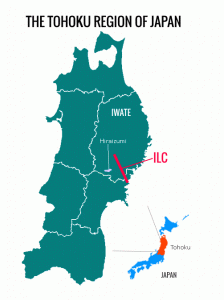
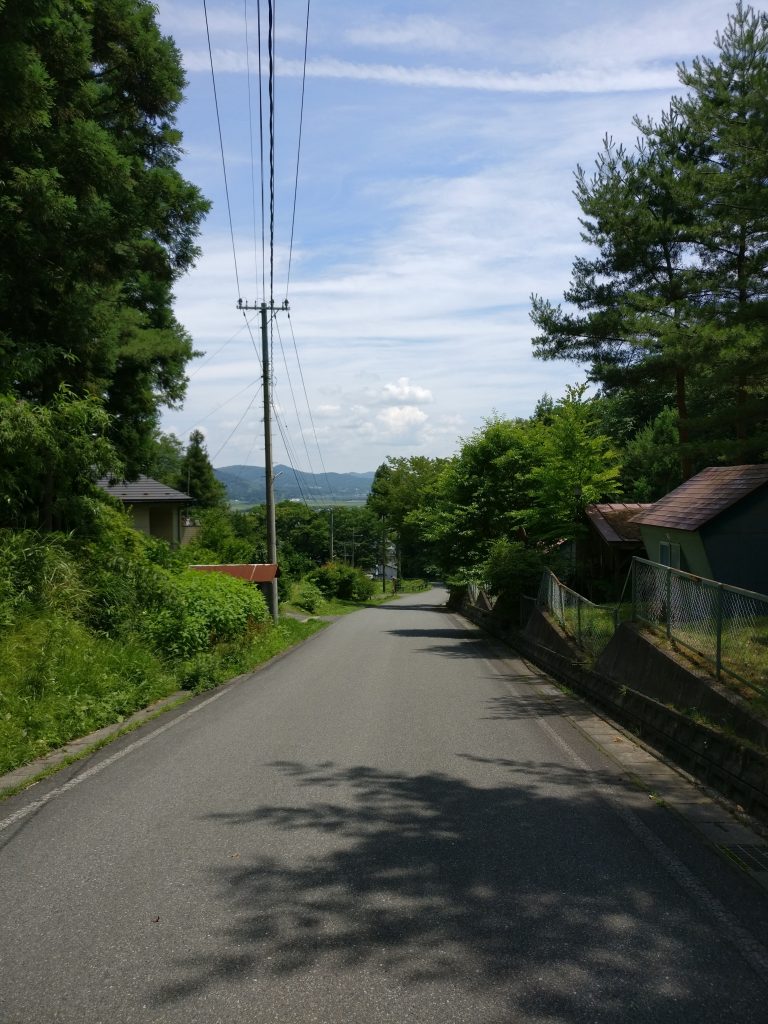
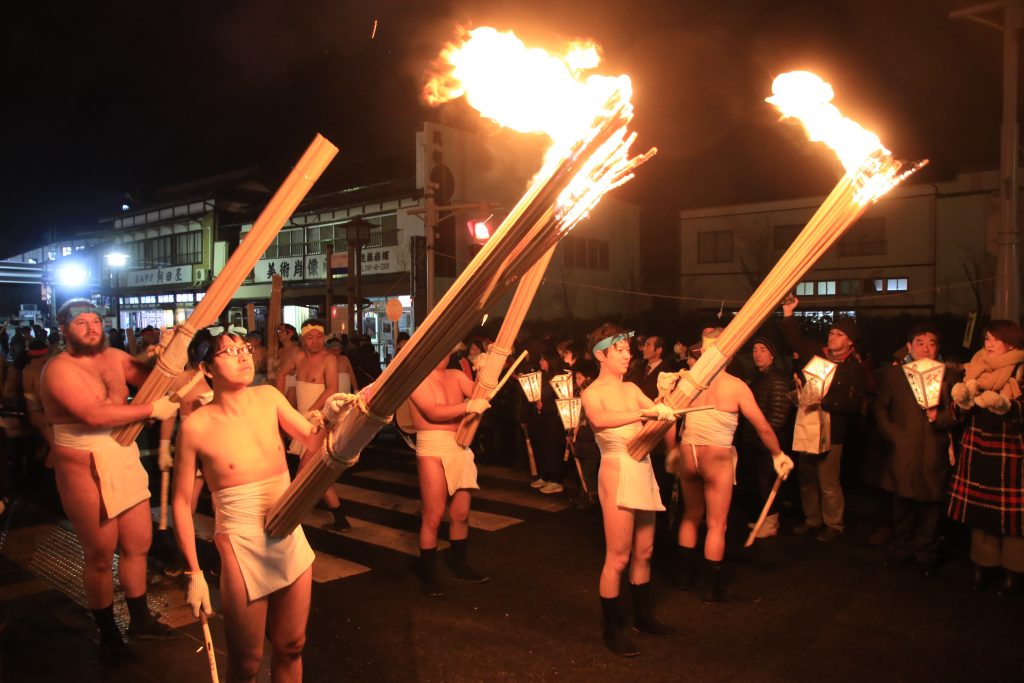
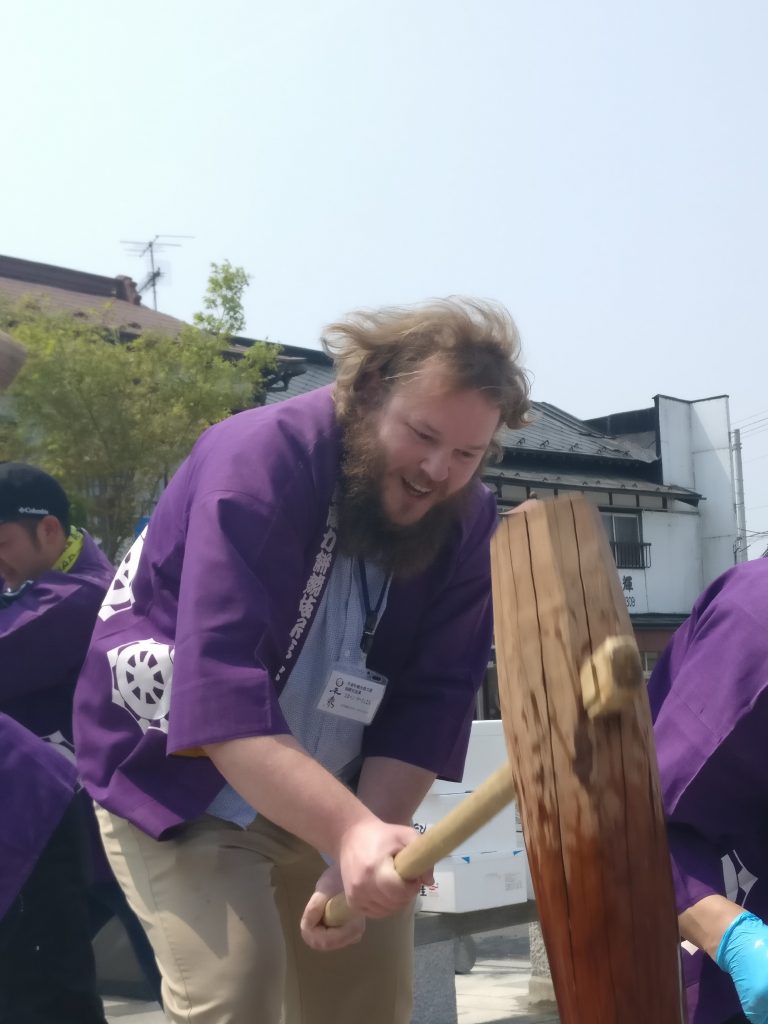
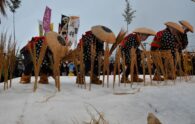
-195x124.jpg)
